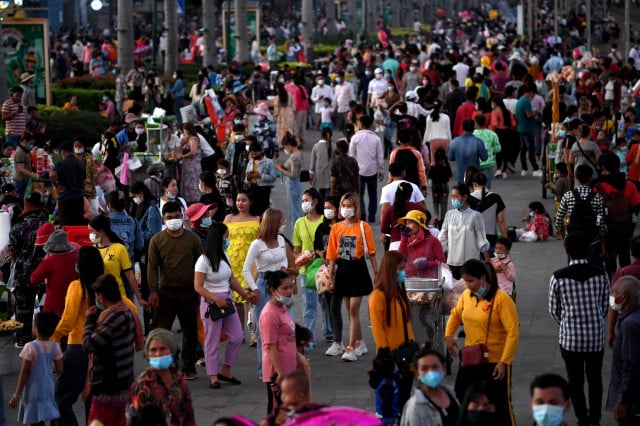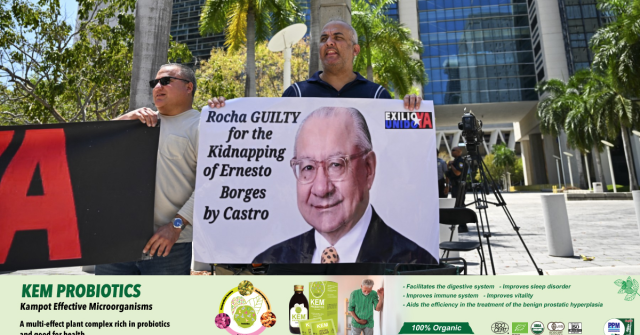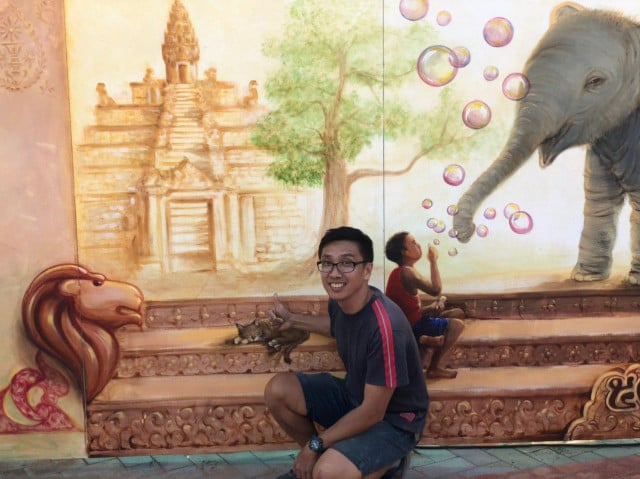COVID-19 Is Likely to Stay With Us

- By Sonny Inbaraj Krishnan
- August 4, 2022 5:40 PM
In late 2021, the Omicron variant of the SARS-Cov-2 virus that causes COVID-19 swept the globe with outbreaks worldwide. In 2022, Omicron continues to dominate with its subvariants named BA.1, BA.2 and BA.2.12.1.
What’s more troubling now is that closely related Omicron subvariants BA.4 and BA.5 are causing surging infections around the world. Japan, for instance, on Aug. 1 recorded 140,000 cases with 94 deaths in the same day.
In Cambodia, we currently see an average of 40 new cases daily. But these could have been undercounted as asymptomatic cases are missed and people increasingly rely on home rapid-antigen-test kits, now freely available in pharmacies, rather than PCR tests in hospitals to avoid forced quarantine by the authorities.
Also, countries seem to be dropping most of their COVID-19 restrictions entirely and others are adjusting in tandem with local conditions in the belief that the end of the pandemic now looks closer than ever, thanks to vaccines that are continuing to be effective at preventing severe illnesses and deaths from COVID-19. This has resulted in the intense mixing of individuals in the absence of wearing masks and social distancing.
Some political parties and the business sector are saying “we are over it, we need to move on” and that “the rest of the world has moved on”, which is not correct of course. COVID-19 comes with gradients of risk due to new variants, continuously rising cases across the globe, varying levels of vaccinations across states and countries, and the uncertainty of long-term effects.
Understandably, the most asked question now is: Is it now possible to get COVID-19 more than once? Yes. It’s possible.
As more variants emerge, including the BA.5 strain, reinfections only become more likely because those variants can potentially evade the immune protection you already have. That means even if you were infected in 2020 with Delta or even Omicron BA.1, you could still get BA.5. Your previous immunity does not protect you from the latest strain.
Emerging research is finding that with each repeat COVID infection – even asymptomatic infection -- you increase your risk for complications including stroke, heart attack, diabetes, digestive and kidney disorders and long-term cognitive impairment, including dementia. Each reinfection also carries with it the risk of long COVID, a syndrome with ongoing COVID symptoms that can last for months.
The coronavirus spike protein is what the virus uses to infect human cells. Antibodies that you might develop after a previous COVID-19 infection have to bind to a really specific area of the spike protein to block the virus. If the spike protein in subvariants keeps changing in significant ways through mutations, antibodies are not as able to do their jobs to protect you from infection. So, if more coronavirus variants emerge, that makes reinfections more likely.
What about vaccinations? Will they work against the Omicron subvariants BA.4 and BA.5?
A study out of Beth Israel Deaconess Medical Center of Harvard Medical School found that new Omicron subvariants BA.4 and BA.5 seem to evade antibody responses of people who are fully vaccinated and boosted, as well as people who had previous COVID-19 infections.
But vaccination appears to still offer significant protection against severe disease.
It is important to be up to date with your COVID vaccinations and boosters. There is abundant evidence that being vaccinated and getting all the boosters that you are eligible for helps protect you against severe disease. Vaccination and booster doses strengthen protection.
The saving grace for Cambodia is that as of July 15, 86.2 percent or 14.4 million Cambodians have been fully vaccinated against COVID-19. This will significantly reduce the number of hospitalisations caused by BA.4 and BA.5.
Though BA.4/BA.5 can evade antibodies — the initial immune response that protects us from infection — vaccination does provide strong protection against severe outcomes.
Previous studies have looked at how vaccines can protect against Omicron strains, although the research was done before the rise of BA. 5.
A study published in The New England Journal of Medicine indicated that three doses of the vaccine provided better protection than two doses. Data from a study of people over age 50 from the US Centers of Disease Control similarly found that each additional dose boosts protection against infection. Booster vaccinations increase antibodies quite a bit, which helps to overcome some of the virus’ immune evasion. The most severe infections continue to be in unvaccinated people.
But there are significant obstacles to achieving complete population immunity with COVID-19 through vaccinations. If vaccine or infection-induced immunity to SARS-CoV-2 proves to be short-lived, or if escape mutants continue to emerge, the viral spread may continue indefinitely.
“COVID-19 is likely to be with us, even if at a very low level of endemic community spread and with lower severity, for the foreseeable future,” write the authors of a perspective in The Journal of Infectious Diseases.
“Like influenza, any level of herd protection (population immunity) against SARS-CoV-2 potentially can be overcome by ever-changing levels of immunity among countless subpopulations, by human movement, crowding, changes in social or prevention behaviors, by demographics, by vaccination levels, by variations in the durability of infection or vaccine-induced immunity, and by the evolution of viral variants, among many other variables,” they warn.
Promoting the wearing of masks is one of the easiest things that health authorities can do to help prevent transmission and to protect vulnerable people. Even small quantities of the virus could infect you if you are not wearing a mask.
Outdoor settings were generally considered "safe" during the COVID-19 pandemic. But are new subvariants changing that? Scientists are still not clear how much the new COVID variant spreads outdoors.
At this point, the definition of outdoors isn’t exactly agreed upon. For some people, a tented wedding is outdoors. For others, a restaurant with an open wall is outdoors. A park or a hiking trail is the only truly outdoor space for the most cautious.
It is important to remember that while the outdoors is considerably safer than many indoor spaces, the closer people are in an outdoor area (and the more people there are), the more air people share. Therefore, to remain safe, it is imperative to wear a mask if you are in a jam-packed outdoor setting where you cannot appropriately socially distance yourself from others.
Sonny Inbaraj Krishnan is Internews Regional Health Advisor COVID-19 for Asia and a Pandemic Health Journalism mentor. Internews works with a network of journalists and partners responding to health crises globally.















